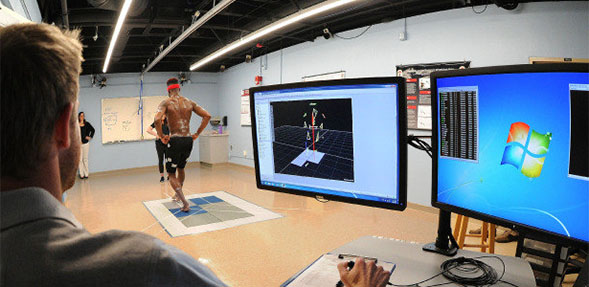
Article reposted from San Diego Union Tribune
Author: Steve Fisher
It’s every parent’s nightmare: You’re watching your son play basketball and all of a sudden he collapses. You don’t know what’s happening, how to help or even if he is going to be all right.
In my tenures as head basketball coach at San Diego State University and University of Michigan, all of the players under my charge were my sons. I still remember vividly watching Dwayne Polee II running down the court and suddenly collapsing in a 2014 SDSU game against UC Riverside. Polee may have been in a world of hurt if it weren’t for our certified athletic trainer at the time, Tom Abdenour, who was formerly the head athletic trainer for the Golden State Warriors.
I credit Abdenour with helping save Polee’s life by implementing crucial emergency procedures to restart his heart.
But, every day, Californians are putting their athletes at risk because there are not enough athletic trainers and the ones we have are unregulated.
In fact, according to a recent study by the University of Connecticut’s Korey Stringer Institute, we are ranked second to last in the nation for implementing policies that are intended to keep the state’s more than 785,000 high school athletes safe every year and help prevent sudden death and catastrophic injury.
One critical reason for this appalling rating is that California is the only state that does not regulate athletic trainers — professionals charged with the prevention, treatment and rehabilitation of injuries and illnesses sustained by athletes and other individuals of all ages. Athletic trainers are the medical experts on the sidelines and a player’s first line of defense when an injury occurs.
I was lucky that the schools I worked at had certified athletic trainers to protect our talented athletes, but many athletes are not so fortunate.
Every state except ours requires that anyone who is hired as an athletic trainer has the required education and certification to provide lifesaving care. In California, anyone can be hired to act as an athletic trainer and provide treatment to athletes.
“Unqualified individuals are falsely representing themselves as athletic trainers to California athletes and their family members,” said Dr. Cindy Chang, a UC San Francisco clinical professor and past president of the American Medical Society for Sports Medicine. “We’re aware of serious mistakes that have resulted from this lack of licensure.”
Last school year, the California Interscholastic Federation (CIF), surveyed 1,406 high schools across the state and found that more than 45 percent of high schools did not have an athletic trainer. Of those that did, more than 15 percent had an athletic trainer who was not certified.
That means more than 60 percent of our kids who play high school sports are at risk of not having a qualified athletic trainer to protect them in cases of cardiac arrest, concussions and heat illness, among other issues.
Even if your school has a certified athletic trainer on its staff, when athletes play at other schools, there’s no guarantee these institutions do.
To keep our athletes safe, Assemblyman Matt Dababneh, D-Woodland Hills, has introduced Assembly Bill 1510, which would require individuals to be certified by the Board of Certification before they can call themselves “athletic trainers” — notably, at no cost to taxpayers.
This bill has tremendous support, including from the American Medical Society for Sports Medicine, American Orthopaedic Society for Sports Medicine, CIF, NCAA, National Federation of State High School Associations and nearly 40 other organizations.
I credit San Diego State’s athletic trainers as members of the core team that make the Aztecs’ success possible. Multiple severe ankle problems, dislocated fingers and other injuries are common in basketball. It’s imperative that teams have a certified athletic trainer on-site to address them.
I’ve seen athletic trainers rehabilitate incoming athletes who were injured and may have had their careers halted before they even began, such as Tim Shelton and Chase Tapley, who both played on SDSU’s 2010-11 basketball team, with a school record 34-3 season and SDSU’s first Sweet 16.
Concerned athletes, parents and community members can keep our players safe by learning more at the California Athletic Trainers’ Association’s website at ca-at.org and supporting AB 1510. Parents should also ask their children’s schools if they have a certified athletic trainer on staff, and verify athletic training credentials at www.bocatc.org/public-protection.
As Dababneh said, “No parent should wonder if their child will be safe on the field or court.”
Fisher was the head basketball coach for San Diego State University from 1999-2017 and is also known for coaching as the University of Michigan, where his team won the 1989 NCAA championship and where he later coached the Fab Five. He currently holds a part-time role with SDSU’s athletic department.
